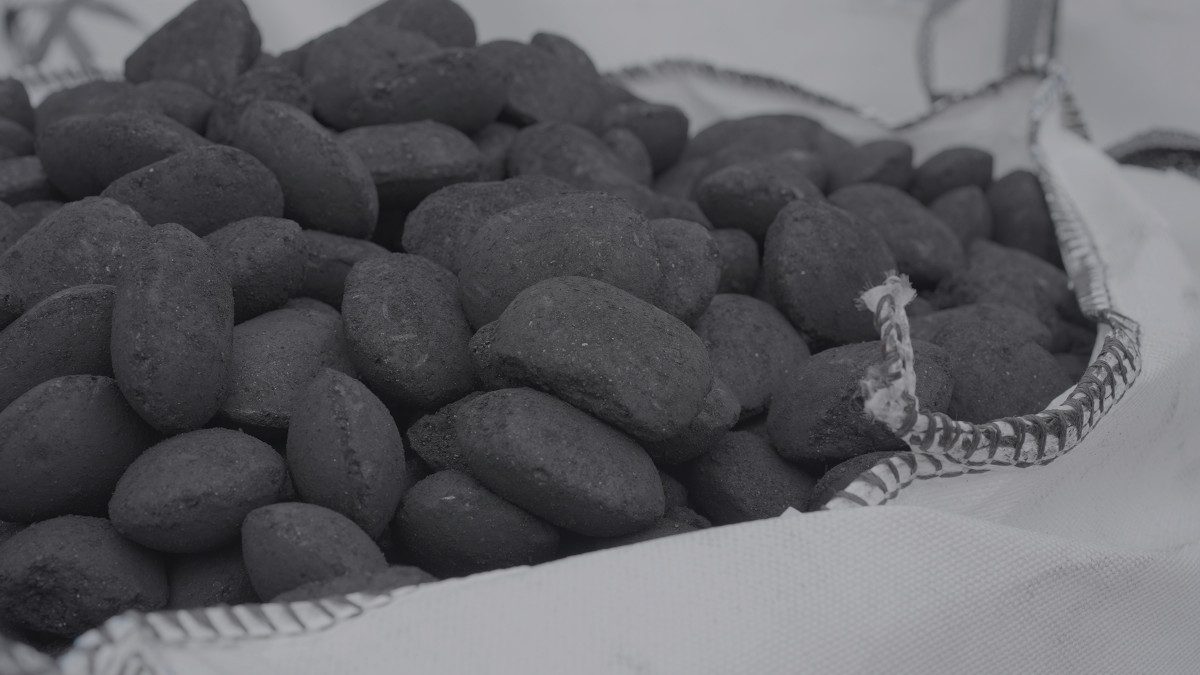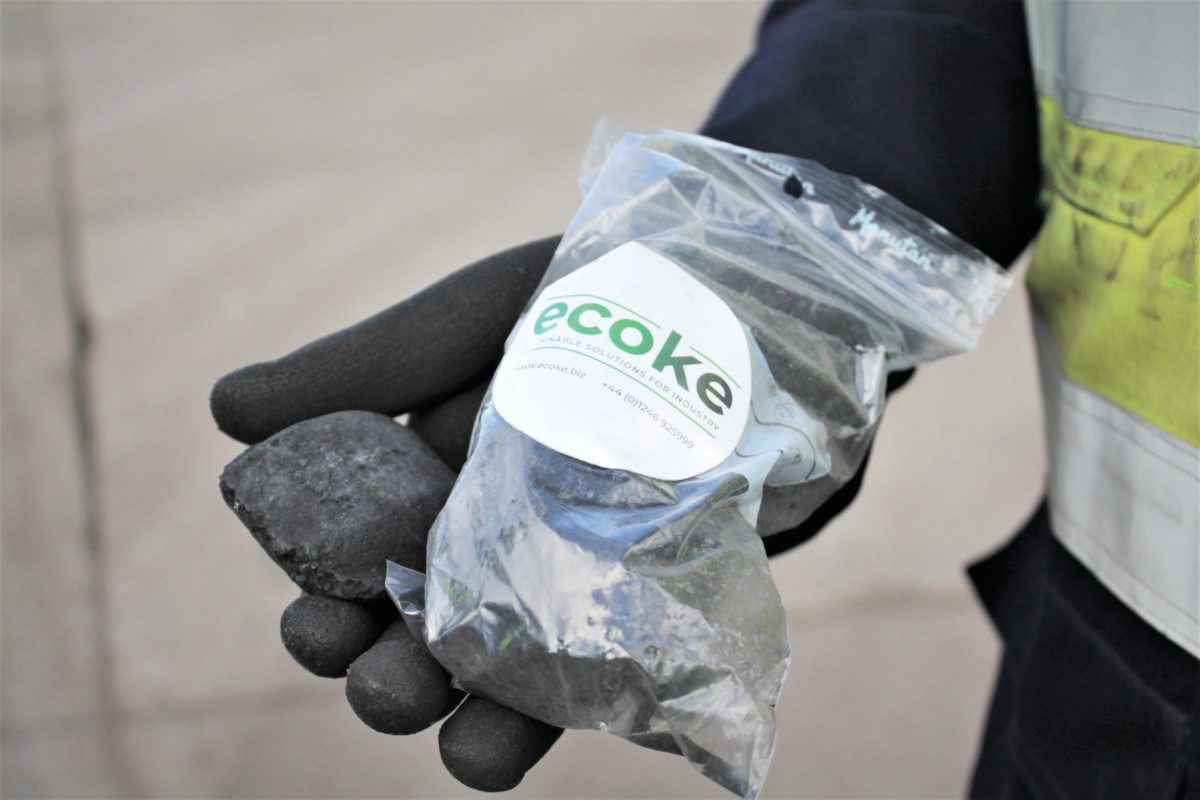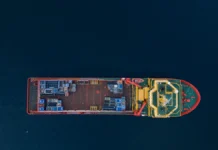
Biocarbon might be emerging as an important ingredient in efforts to decarbonize metallurgical production. Envirotec spoke to Sam Beardshaw of UK firm Invica Industries about how it fits into the menu of technologies being primed for a role.
The pressure is on to decarbonize the metals industry, which alone contributes 7% of global CO2 emissions (5% in the EU). Global Energy Monitor reported in July that the iron and steel industry had made important strides towards net zero in the past year, with figures suggesting around 93% of new steelmaking capacity will use low-emissions electric-arc furnaces (EAF).
But there is a long way to go. The IEA wants to see 37% of the industry have an EAF by 2030. In the meantime, the traditional setup of a basic oxygen furnace (BOF) tends to predominate, particularly in China and India. And these have tended to run on non-renewable fossil fuels.
Technology pathways
Likely contenders in the contest to find a technology to decarbonize steel production include principally: hydrogen (either via direct injection, or a method called “direct reduced iron”), carbon capture and storage, and – as this article discusses – biocarbon.
The direct injection of hydrogen into blast furnaces is considered promising, and is currently at proof-of-concept stage, with a number of approaches receiving funding via the UK government’s Industrial Hydrogen Accelerator Programme. But current estimates suggest it will need extraordinary quantities of hydrogen, which in turn requires phenomenal amounts of green electricity to drive the electrolysis process (enough to power every home in Scandinavia for a year, says Teratel).
The process called Direct-Reduced Iron (DRI) is likely a longer-term bet given the need to construct new plants, and install EAFs. While DRI has run on natural gas, its replacement with green hydrogen offers a pathway to decarbonization.
This kind of DRI process involves exposing iron ore to hydrogen in a reactor vessel. Hydrogen reacts with the oxygen in the ore to produce direct-reduced iron, or sponge iron, which is then melted in an EAF to produce steel. An additional drawback is that it requires a higher-than-usual grade of iron ore, and a consistent size and quality of feedstock.
Carbon capture is being deployed widely in the steel industry, and can capture emissions from blast furnaces, or where there is limited opportunity to deploy lower-emissions production methods. But there are still huge challenges with figuring out a way to do it at scale, and within reasonable cost and energy constraints.
Near-term solution?
What looks like a more immediate prospect for decarbonizing all metallurgical applications – and other forms of hard-to-abate production – is to run existing blast furnaces not on hydrogen but on something comparable to existing feedstocks. “Biocarbon” has a more specific meaning than broader terms such as “biochar” or “bio-coal”, and really refers to a feedstock made from wood waste or otherwise biogenically-sourced material, which has been processed to produce something with a performance specification more closely matching fossil materials. The resulting product – available from Invica Industries as “ecoke” – is able to serve as something like a drop-in replacement for non-renewable fuels like coal, anthracite and metallurgical coke, without any significant requirement for modification of blast furnaces and other processes.
Recently, biocarbon has become a more commonplace fixture in discussions of steel industry decarbonization, suggests Invica’s Sam Beardshaw, “as people are starting to realize it’s the only immediate way to decarbonize the industry, or to ensure it can hit some of its near-term targets”.
A biocarbon product like ecoke is something quite different to the charcoal you might pull from a home barbeque, he explains.
Key to the proposition is its tight specification in relation to emissions, and the fact that it can enable steel production that complies with zero-emissions regulations such as the EU’s Renewable Energy Directive.
Beardshaw explained that the differences were fairly stark between a product (coal) which, without human interference, would allow carbon to remain locked underground (where it has lain for millions of years), and which you are now proposing to liberate from the ground via a mining process, and, on the other hand, another product (biocarbon) derived from a material like waste wood, which has been sustainably sourced, and which would otherwise decompose (and produce emissions) if you didn’t take it and transform it into something useful.
Sourcing is obviously a key part of the proposition, and ecoke uses material certified as coming from a sustainable, biogenic source. For this sourcing, Invica Industries has partnered with leading biocarbon producers in the world, said Beardshaw, all pulling from waste wood sources like sustainable forestry projects.

Producing the briquettes
The other element of the USP is the production process itself, and this waste material passes through a few process steps before you end up with the finished hybrid solution – an ecoke briquette, which provides a minimum 30% reduction in emissions in comparison to traditional fossil fuels.
Invica Industries literature quotes the ecoke30 product as providing emission reductions of 1 t CO2 / 1 t ecoke30 (i.e., for every tonne of ecoke used in place of conventional carbon-based fuel (like metallurgical coke), the resulting CO2 emissions are reduced by 1 tonne).
The material used to make ecoke is aggregated at the company’s production facility in Immingham. It undergoes pyrolysis, as with the production of biochar, to concentrate the carbon content. In its raw form, biocarbon is lower in fixed carbon than metcoke and anthracite. At this stage the material is also blended with some proportion of the latter kind of high-grade fossil fuel material, “in whatever proportion the end user requires”, says Beardshaw. In this way, biocarbon can be brought up to the performance specifications required by a steel producer.
Biocarbon in its raw form is also higher in volatiles (things like water vapour, tar, and organic materials) than metcoke or anthracite, for example, which would (if not minimised or removed) impact the behaviour and performance of the material during steelmaking. So these materials are also partially removed in the ecoke production process.
To provide the final pillow-shaped briquette, the blended material also passes through a proprietary agglomeration process, where a biomass binder material is added. This means the finished product can be transported in bulk, doesn’t break into small fragments, and won’t tend to absorb moisture from its surroundings.
The whole process entails overcoming a number of challenges. For example, some degree of yield loss is entailed in achieving the high-carbon fix, and so the selection of economic raw materials is essential.
Invica Industries’ facility is able to produce about 0.5M tonnes per year, which equates to a lot of fossil material being taken off the market, and Beardshaw said it is probably the only biocarbon solution in the EU that is ready to go at-scale, to create a product that can be used by almost any end user in the metals sector. “We think we’re in a good position to help people immediately decarbonize,” he said.

Experience gained
The huge selling point is obviously a putative zero-capex requirement for the end user, and the quoted 30% drop in emissions compared to using traditional fossil fuels.
No process changes are required. And existing handling and storage methods can be used.
But the company has been supplying ecoke since 2019, and Beardshaw said it is already the focus of “several interesting case studies with household names in the steel industry”.
One of the first customers has been Liberty Steel, which has had an ongoing R&D programme to increase the share of biocarbon in its production. The firm now provides a 100% biocarbon product that has been successfully used to create specialty steels used in the aerospace industry.
Balance sheet
Data is obviously paramount for firms looking to secure permits and satisfy the requirements of emissions trading schemes, a point that Inivica’s literature doesn’t overlook. “Each batch of ecoke is supplied with a comprehensive data pack that means end users can be confident in their application for ETS exemptions for the biocarbon share of the ecoke product”.
While approaches to decarbonizing steel production like hydrogen and CCS look very promising for the future, the ETS landscape seems to be changing quickly, with free allowances scheduled to decrease rapidly from 2026 onwards, and to disappear by 2034. There may well be an expanded role for technologies that can help pull down emissions a bit more quickly, and with less of an overhaul of existing processes.
When it comes to advancing along the decarbonization path, the accountancy certainly looks compelling, and favours a rapid shift.








